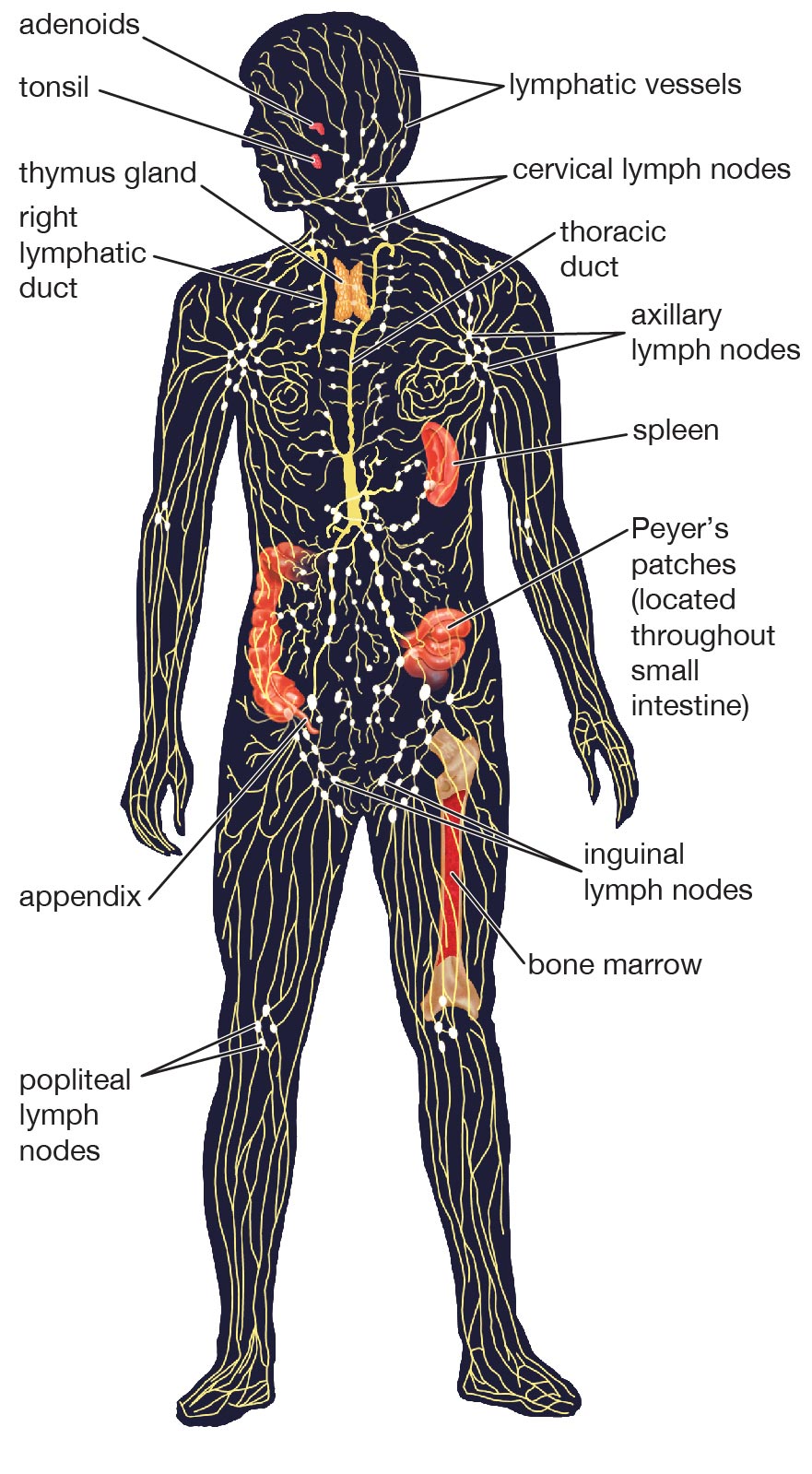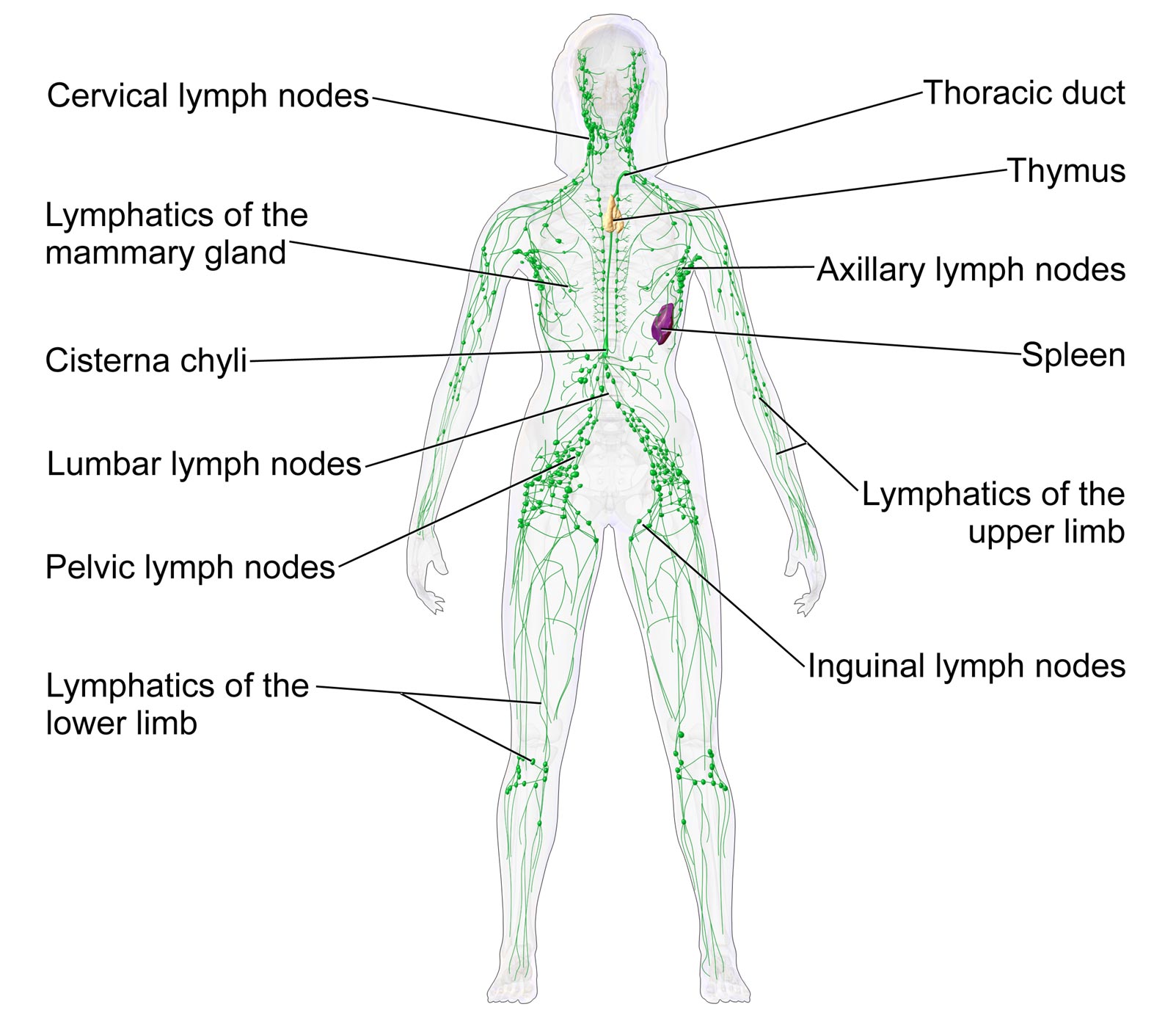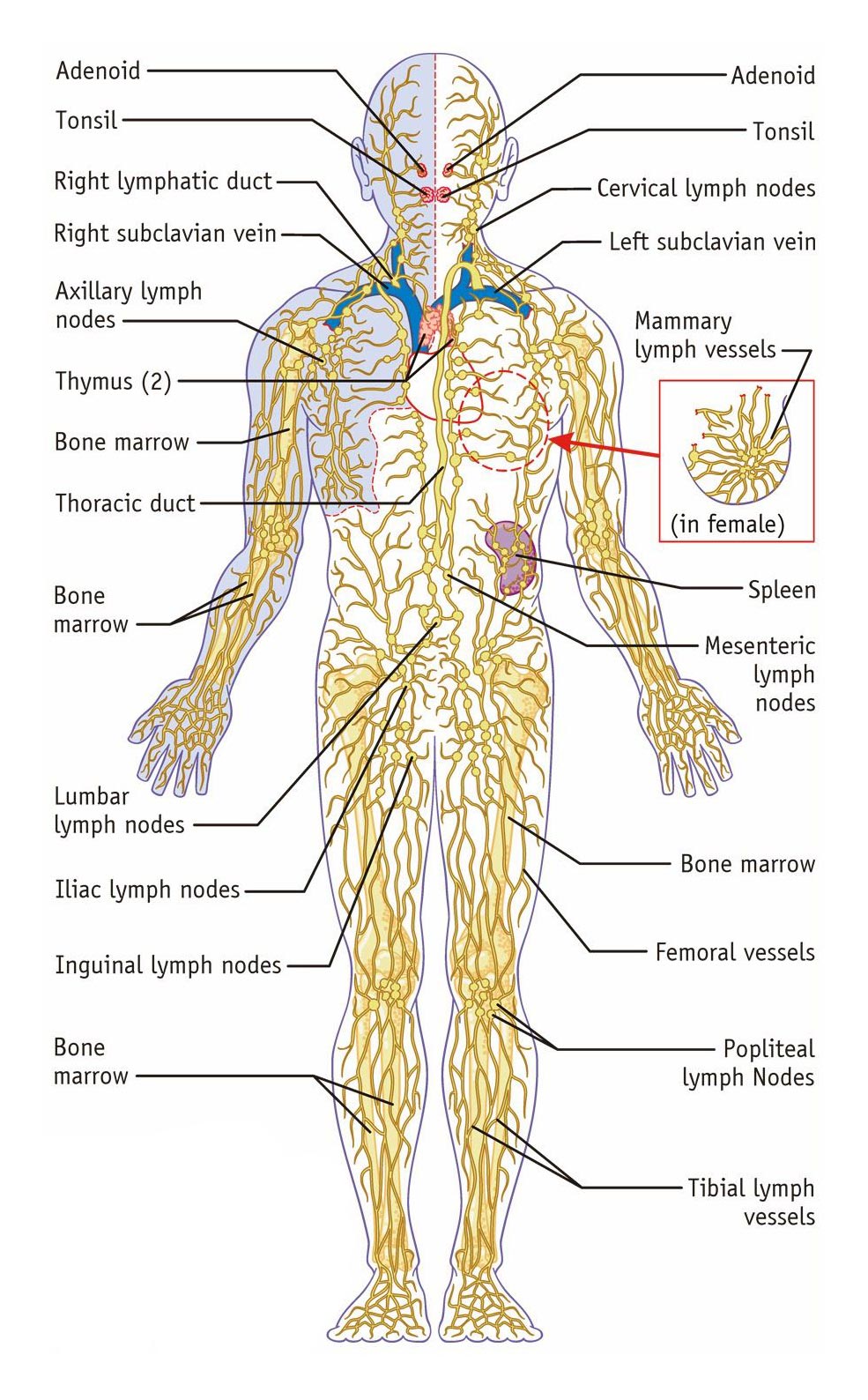The lymphatic system is a network of tissues, organs, and vessels that helps to remove waste, toxins, and other unwanted materials from the body. Here is a brief description of the parts of the human lymphatic system as labeled in a typical diagram:
- Lymphatic Capillaries: Microscopic vessels that collect excess fluid, called lymph, from tissues throughout the body.
- Lymph Nodes: Small, bean-shaped structures located throughout the body that filter lymph, removing foreign substances such as bacteria and viruses.
- Thymus: A gland located in the chest that helps to develop and mature white blood cells called T-lymphocytes, which play a critical role in immune system function.
- Spleen: An organ located in the abdomen that helps to filter blood and remove damaged or abnormal red blood cells.
- Lymphatic Vessels: Larger vessels that transport lymph through the body, eventually emptying into the bloodstream.
- Bone Marrow: A spongy tissue found in bones that produces blood cells, including white blood cells that play a key role in the immune system.
- Tonsils: Two small masses of tissue located in the back of the throat that help to fight off infections.
The lymphatic system works in conjunction with the circulatory system to help maintain proper fluid balance in the body and protect against infections and disease.





